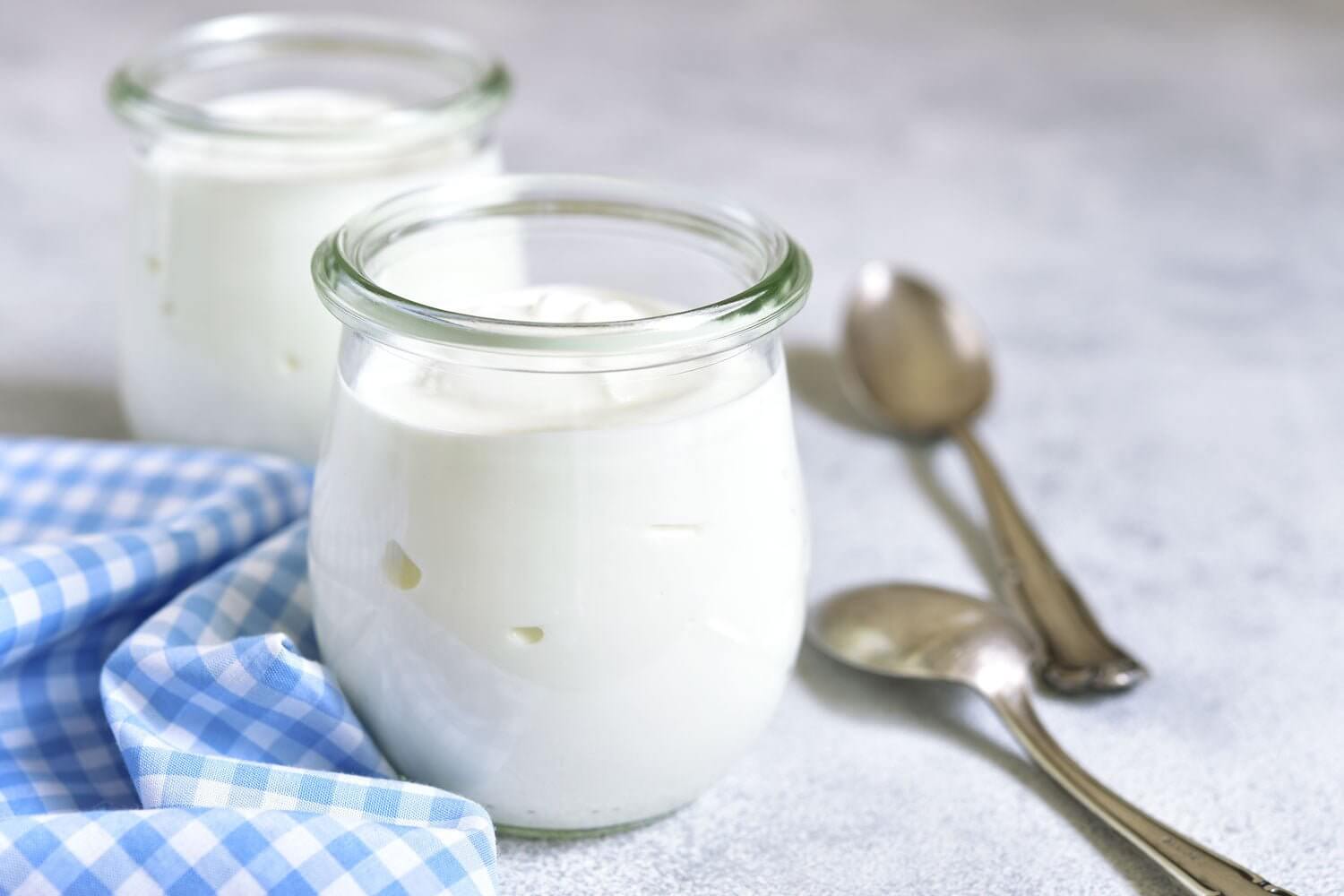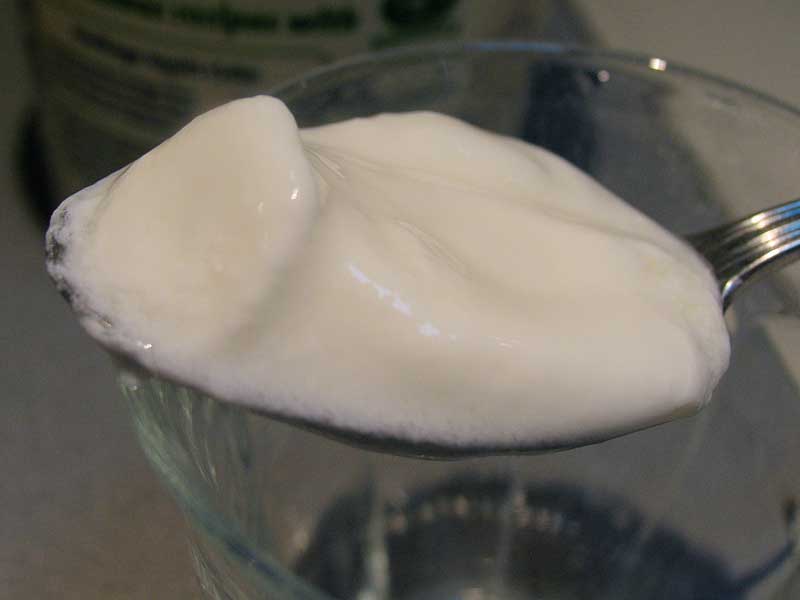
Yogurt Recipe
-
Yield
1 Pound
-
Aging Time
None
-
Skill Level
Beginner
-
Author
Jim Wallace

Yogurt Recipe Info
What Is Yogurt
Yogurt Cultures
Health & Digestion
Cost Savings
Ingredients
Total price for selected items: Total price:
Instructions
Any type of milk can be used with this recipe, but Goat milk yogurt will be thinner than cow milk yogurt, because the proteins in the milk are very different. The thickness can be improved, by adding 3 tablespoons of dry milk powder, for each quart to the goat milk.
-

Heat Milk
Pour 1/2 gallon of milk into a heavy stainless pot. Heat the milk to 185F, and then hold it there for 10-20 minutes. This will prepare the whey proteins which are largely responsible for thickening the yogurt. While heating gently stir the milk to prevent scorching.
Note: If using raw milk, the milk can be heated to 102F, to protect natural cultures in the milk. But, the yogurt will not thicken, unless a small amount of powdered milk, carrageenan or other thickener is added.
-

Cool Milk
Once heated, quickly cool the milk down to 110-115F. This can be done by submerging the pot in a sink filled with cold water.
Note: Remove the pot from the cold water, a degree or two before the desired temperature is reached, to avoid over cooling the milk.
-

Add Culture
When the milk reaches the proper temperature, yogurt culture can be added. If using our yogurt culture, add 1 full packet to the milk and mix in thoroughly.
Tip: In exchange for a yogurt culture, you can use 1 heaping tablespoon of cultured yogurt, per quart of milk. With this method, the yogurt can change the culture balance and successive batches may become more acidic. We suggest using this method 8-10 times before starting a new culture.
Info: Yogurt culture is a mix of Streptococcus Thermophilus and Lactobacillus Bulgaricus plus any probiotic additions the culture may contain.
-

Incubate Yogurt
Incubate the cultured milk in a yogurt maker, or another insulated container.
Let the milk incubate for several hours at 90-100F. Y5 Sweet Yogurt Culture and Y3 Creamy Yogurt Culture will take 5-12 hours. Y1 Bulgarian Yogurt Culture will take about 3-5 hours. These times depend on the temperature of the milk while incubating. The cooler the milk, the longer it will need.
Tip: The time of incubation will determine thickness, texture and taste of the final yogurt. In our cheese room we use a separate clock to monitor the process.
Longer times and/or higher temperatures will make thicker yogurt and with a tangier flavor. Shorter times and/or lower temperatures will make thinner yogurt with a sweeter flavor.
-

Refrigerate
When a desired flavor is reached, the yogurt should be chilled in the refrigerator, as quickly as possible.
Tip: Once cooled, the yogurt thicken so the final incubation time should be judged on flavor rather than texture.
Greek Style Yogurt
Greek style or drained yogurt, provides a more concentrated flavor and rich creamy texture. This can be nice to mix with fruit or granola.
For anyone who is lactose intolerant, this style has a reduced level of lactose, because a lot of the residual lactose drains off with the whey.
You can use any of our delicious yogurt cultures to make greek style yogurt. Simply follow the steps below.
-


Transfer Yogurt to Butter Muslin
Place a colander inside a large bowl, be sure there is space under the colander, for whey to drain down. Line the colander with Butter Muslin.
Transfer the finished yogurt into the lined colander.
-


Let Drain
Cover the top of the yogurt with a piece of the Butter Muslin and drain in the lined colander for several hours, until a desired thickness is reached.
This can be drained on the counter or in the refrigerator. The longer it drains and the higher the temperature, the thicker the yogurt will be.
Tip: To speed up the draining time, tie the four corners of Butter Muslin together, to create a draining sack and hang the yogurt to drain.
-

Refrigerate
Once the yogurt has reached a desired thickness, it can be transferred it to a container and refrigerated.
The leftover whey can be used for many things including high protein smoothies, soup stocks, fed to chickens and used to water tomato plants.
Cheese Making Supplies
Related Products
You May Also Like


































